PAMIRIS
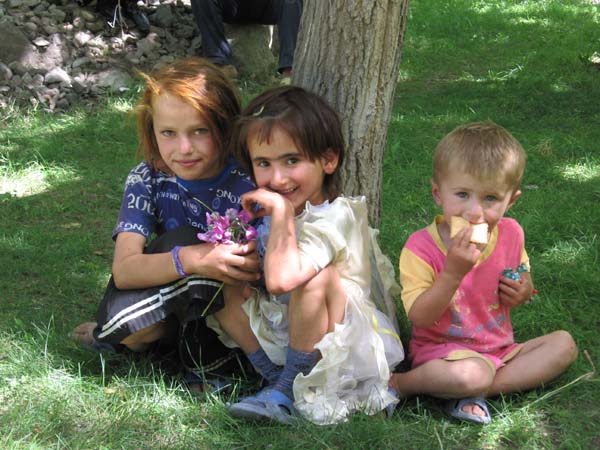
Pamiris
(Badakhshani, Badakhshoni)
Regions
with significant populations
Gorno-Badakhshan (Tajikistan)
Badakhshan Province (Afghanistan)
Taxkorgan County, Xinjiang (China)
Gojal region (Pakistan)
Languages
Pamir languages, Tajik language, Russian language, Mandarin Chinese
Religion
Nizari Isma'ili Shia Islam as well as a minority of Sunnism adherents
Related ethnic groups
Other Iranian peoples
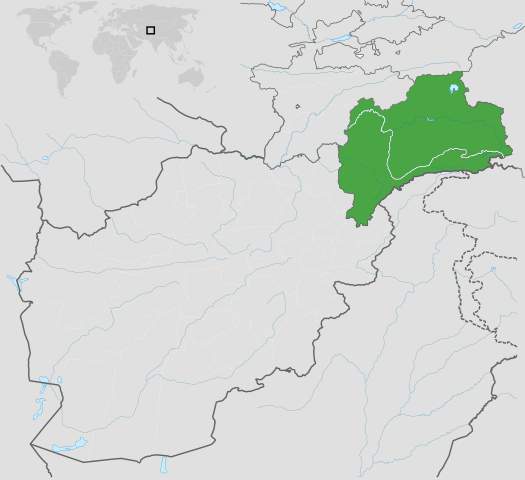
Green
portion of the map above shows those parts of Badakhshan, comprising
Tajikistan (Gorno-Badakhshan Autonomous Region in Tajikistan) in
the northernmost zone and Afghanistan (Badakhshan Province in Afghanistan)
in the easternmost and southernmost areas.
The
Pamiris are an Iranian ethnic group who are native to the Gorno-Badakhshan
Autonomous Region of Eastern Tajikistan, the Badakhshan Province
of Northeastern Afghanistan and the Taxkorgan Tajik Autonomous County
in Xinjiang, China.
Ethnic
identity :
The Pamiris are composed of people who speak the Pamiri languages,
the indigenous language in the Gorno-Badakhshan autonomous province.
The Pamiris share close linguistic, cultural and religious ties
with the people in Badakhshan Province in Afghanistan, the Sarikoli
speakers in Taxkorgan Tajik Autonomous County in Xinjiang Province
in China and the Wakhi speakers in Afghanistan and Pakistan.
In the Pamiri languages, the Pamiris refer to themselves as Pamiri
or Badakhshani, a reference to the historic Badakhshan region where
they live.[citation needed]
In
China, Pamiris are referred to as ethnic Tajiks. In Afghanistan,
they are recognized as ethnic Pamiris and the Afghan National Anthem
mention Pamiris (Pamiryan) in the list of ethnic groups of Afghanistan.
In
Pakistan, Wakhi Pamiri people live in the Gojal Sub-Division of
Hunza District, Broghil Valley of Upper Chitral and in the Kurumbar
Valley of Ghizer District.
The
Pamiri people have their own distinctive styles of dress, which
can differentiate one community from the next. The styles of hats
are especially varied: one can spot someone from the Wakhan, as
opposed to from Ruhshon or Shugnon valleys, based solely on head
wear.
History
:
In 1929 Gorno-Badakhshan was attached to the newly formed republic
of Tajikistan, and since that point there has been a great deal
of controversy surrounding the ethnic identity of the Pamiris. Some
Tajik scholars claim Pamiri languages to be a dialects of Tajik
language and there has been a long running debate as to whether
the Pamiris constituted a nationality separate from Tajiks.
But there is a consensus amongst linguists that the Pamiri languages
are East Iranian, a sub-group of Iranian languages while Tajik language
which is Persian is included in Southwestern Iranian, another sub-group
of Iranian languages. In the 1926 and 1937 Soviet censuses Rushani,
Shugni and Wakhis were counted as separate nationalities. After
1937 these groups were required to register as Tajiks.
During
the Soviet period many Pamiris migrated to the Vakhsh River Valley
and settled in Qurghonteppa Oblast, in what is today Khatlon Province.
In the 1980s debate raged in Tajikistan about the official status
of the Pamiri languages in the republic. After the independence
of Tajikistan in 1991 Pamiri nationalism stirred and the Pamiri
nationalist political party Lali Badakhshan took power in Gorno-Badakhshan.
Anti-government protests took place in the province's capital, Khorog,
and in 1992 the republic declared itself an independent country.
This declaration was later repealed. During the Tajikistan Civil
War from 1992–1997 Pamiris in large backed the United Tajik
Opposition, the Pamiris were targeted for massacres, especially
those living in the capital Dushanbe and Qurghonteppa Oblast. In
the early 1990s there was a movement amongst Pamiris to separate
Gorno-Badakhshan from Tajikistan.
Religion
:
Fatimid-Isma'ili Islam had been introduced to the Badakhshan and
Pamir (valley) by Nasir Khusraw al-Qubadiani, who was appointed
as the Da'i al-Mutlaq and Hujjat al-Islam by Fatimid Caliph Abu
Tamim Ma'add al-Mustansir bi-llah for Pamiris in Turkestan and Badakhshan
in Afghanistan. Today's Pamiris are predominantly Nizari Isma'ili
Shia and follow the Aga Khan. The Aga Khan Foundation became the
primary non-governmental organization in Gorno-Badakhshan. There
are also Sunni Pamiris currently numbering at approximately a few
thousand.
Notable
individuals :
• Shirinsho Shotemur, politician, one of
the founders of the Tajik Soviet Socialist Republic
• Davlat Khudonazarov, filmmaker and presidential
candidate in 1991 presidential elections in Tajikistan
• Muboraksho Mirzoshoyev, musician
• Daler Nazarov, musician and actor
• Abusaid Shokhumorov, historian and philosopher
• Qozidavlat Qoimdodov politician, Deputy prime minister
of Tajikistan, Ambassador
• Oleg Fesov, musician and composer
Gallery :
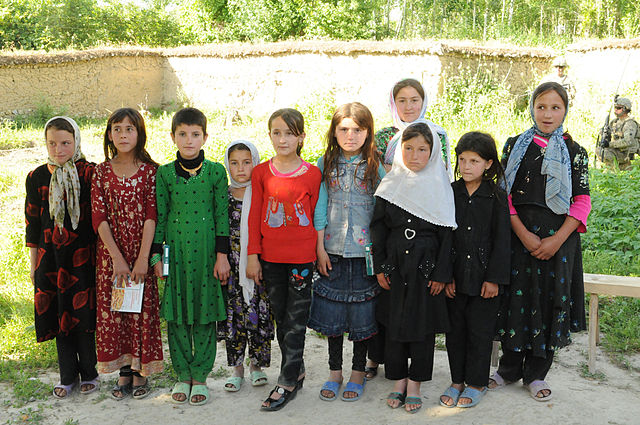
Pamiri
children in Afghanistan
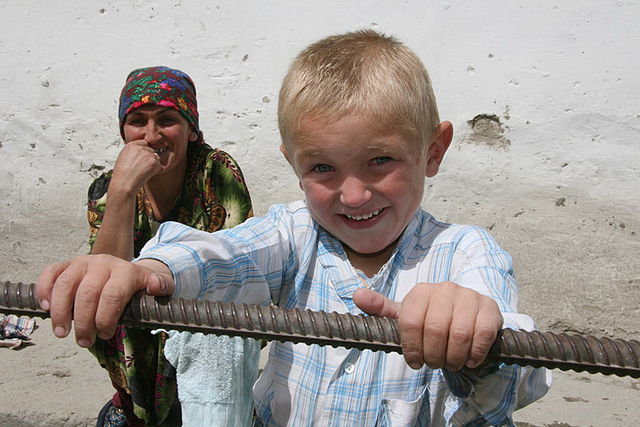
Pamiri
children in Tajikistan
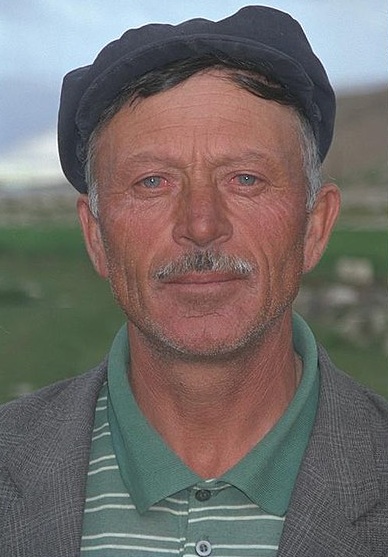
Pamiri
man in Tajikistan

Pamiri
man in Tajikistan

Pamiri
children in Afghanistan
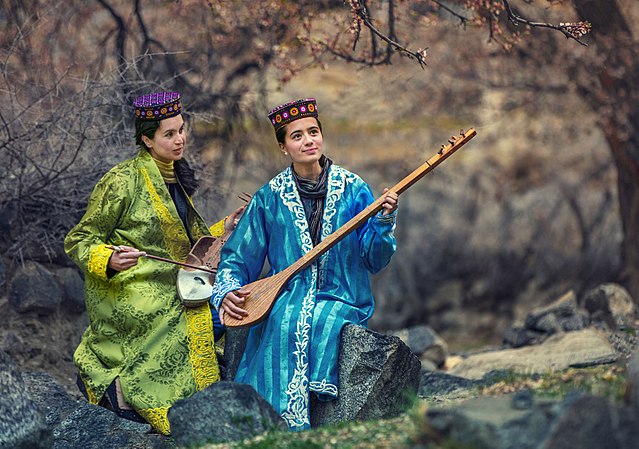
Wakhi
Pamiri artists in Gojal Valley, Pakistan
Source
:
https://en.wikipedia.org/
wiki/Pamiris








